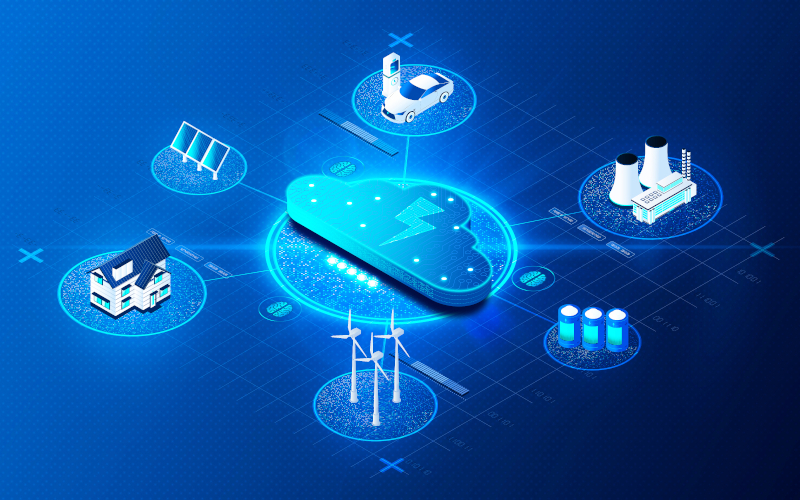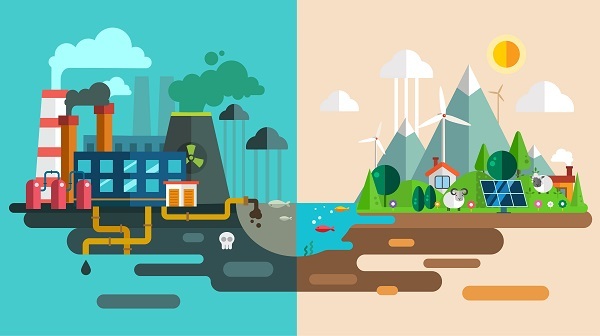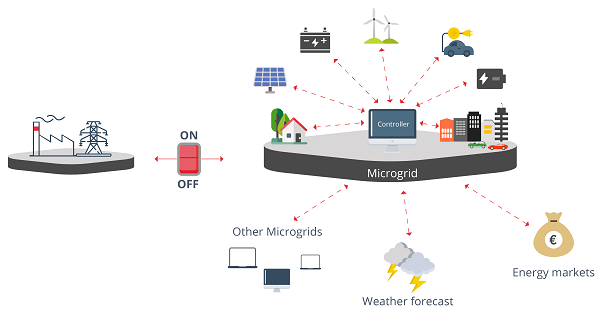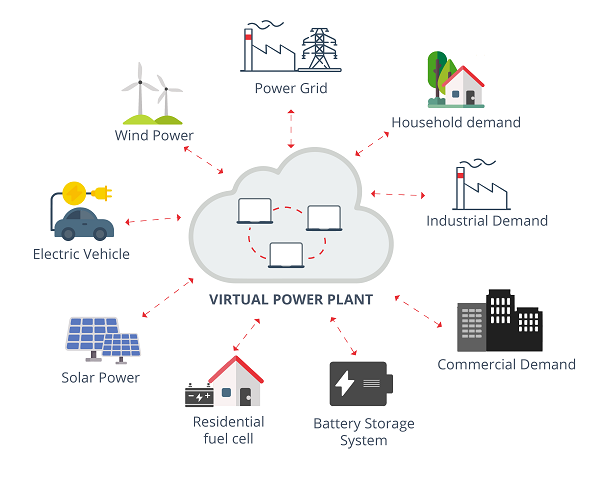Virtual Power Plants: ‘The Internet of Energy’

The world is currently facing a difficult energy situation because, on the one hand, demand for energy is increasing and, on the other, the sources used have limited resources that are also harmful to the environment. The planet’s demographic and economic growth is the main cause of the increase in this energy demand and brings with it and acceleration in the consumption of resources which, if not curbed, could lead to the depletion of fossil fuels in approximately half a century. To curb the consequences and avoid a deficit in energy generation, the sector is proposing structural changes in order to carry out an energy transition with the objectives of securing supply, increasing competitiveness through the use of lower-cost approaches and reducing environmental damage.

- Renewable energies vs traditional energies -
The lack of resources and society’s growing awareness of the environment seem to indicate that renewable energy sources are the answer to the energy crisis, although their full adoption is still being hampered mainly for the following reasons:
- Variability: Unlike traditional energy sources, the generation of renewable energies depends on natural factors, such as the intensity of the sun or the strength of the wind, which means that the energy generated is variable, while user consumption is not. This characteristic makes energy management considerably more difficult and requires good weather forecasting mechanisms to counteract variability.
- Lower power: Compared to traditional energies, the power obtained by renewable energy plants is so low that, at present, it would be impossible to make the complete energy transition while maintaining the level of energy expenditure that occurs with traditional energies.
However, solutions have already emerged that could put an end to these problems and, if applied correctly, would mark the beginning of the energy transition. So far, energy has been generated in huge power plants that are totally isolated from the population, due to the pollution that they produce, but with renewable energies, the idea of microgeneration energy arises, by means of which micro power plants are distributed in multiple locations (solar panels on the roof of a building, for example) and virtually linked. This concept is known as Distributed Energy Resources (DER) and is the basis for the two main solutions that are the most popular for the future:
- Microgrid: A microgrid is essentially a miniature, localized electric power model of a complete grid system, in which the generation, storage, distribution and consumption of electric power takes place and serves a specific geographic location. These locations can be mining facilities, industrial sites, hospital complexes and other businesses that cannot afford the risk of power outages, or even residential communities prone to blackouts due to the remoteness or unreliability of centralized power. It is also possible to create smaller microgrids, called nanogrids, which are a power distribution system for a single house or small building, with the ability to connect or disconnect from other power entities through a link. A microgrid is composed of one or more DET assets, such as solar panels, wind turbines, gas generators, etc., that produce electrical power at the same location as the energy loads. Using sophisticated microgrid controllers, microgrids can be connected directly to the main grid, but can also be dynamically isolated, when necessary, i.e., disconnected from the centralized power grid without causing a power interruption to the site loads supported by the microgrid.

- Microgrid. Source.-
- Virtual Power Plants (VPP): The VPP are distributed and scalable collection of power generation units, such as DER assets, or an aggregation of flexible power consumers ready to provide strategic load reductions when needed. To specify such curtailment, famed energy physicist Amory Lovins originated the term and concept of “Negawatts” in 1989. A Negawatt is a negative Megawatt, which is used to define the energy saved by increasing efficiency or reducing consumption, which generally has the same electrical equivalent as power production on the grid. When scaled is aggregation, this demand reduction is also like a Virtual Power Plant.

- Virtual Power Plant.Source. -
The VPP’s can be considered as a cloud-based distributed power plant, which brings together heterogeneous DER to improve power generation, as well as to commercialize it in the electricity market. To make the system more efficient or reliable for both distribution facilities and users, battery storage systems are employed, along with traditional solar panels, wind turbines and other power plants. These units are interconnected, and their produced energy is intelligently distributed through a central operator, with the aim of balancing the load between energy generation and energy consumption of the systems connected to the grid.
Both solutions are optimal and offer a similar level of reliability and economy for the end user, but when analysed on a large scale, VPPs have certain characteristics that place them above microgrids. These characteristics are mainly the combination and aggregation of resources from different geographical areas and the few legal restrictions faced by this solution, while microgrids, on the contrary, do not adapt as well to current legislation and could face obstacles that make it difficult to regulate and sell energy.
Advantages of virtual power plants
Therefore, and focusing now on the VPP, it is an idea that excites the energy sector and provides significant benefits to both consumers and the planet. Its implementation is complicated and requires a high level of organization and management to get the maximum potential, but in doing so, the following advantages are obtained:
- Unification of sources: With VPP, all power plants, regardless of the source from which they obtain energy, are unified and form a single global battery that feeds all consumers. This results in a more constant generation of energy, since the shortfalls of some plants are compensated by the production peaks of others.
- Efficiency: One of the points on which most emphasis is placed by the VPP is on getting the most out of energy generated by distributing it correctly. The way in which distribution is managed is as follows: the plants that are generating the most energy give their energy to the areas that are consuming the most, so that no plant reaches its capacity limit and wastes energy.
- Safety: The percentage of employees who are injured or fall ill is significantly lower in VPP plants than in traditional plants, which implies an improvement in the working condition of the employees and, therefore, and improvement in the working environment.
- Economy: Users are part of a VPP, such as citizens with solar panels on the roof of their homes, see their electricity taxes reduced because part of the energy that they collect is shared with the rest of the VPP network. The greater the amount shared, the greater the benefit to the end user.
Conclusion
Definitely, VPP seem to be a good alternative to the current environmental and energy crisis situation and their implementation seems imminent, as more and more companies are looking to increase the supply of distributed grids, thus being able to adapt to the energy transition. One example is Australia, which has launched a project to study the feasibility of a nationwide VPP plan, which, if implemented correctly, would be a huge step forward in the energy transition and would serve as a mode for the rest of countries.









